Monthly Archives: June 2010
Gestural input is to some extent inherent in the language of magic, as seen in the phrases to "cast a spell" and to "weave an enchantment." The fantasy of weaving magic can be vividly seen on the cover of LucasArt's Loom (1990), in which two hands weave a glowing cat's cradle out of multi-colored light. (While Loom lacked any kind of gestural interface, its unique mode of musical spellcasting and melodic feedback will figure heavily into a later blog entry on multimodal feedback and audio magic.) Gesture is also an integral part of occultist approaches to magic, ranging from the pentagrams and hexagrams traced in the rituals of the Golden Dawn and Thelemic magick, the sigils drawn by Austin Osman Spare and Buddhist kuji-in mudras later adapted in the ninja-themed anime series Naruto.
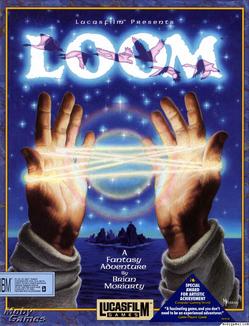
Closely related to the idea of gestural magic is the verbal component of spell-casting, which appears in colloquial speech as a magic word. From David Copperfield to Harry Potter and the 2010 Sorcerer's Apprentice remake, the image of a wizard waving a wand and intoning a word in order to release a powerful magic spell pervades public consciousness of enchantment. Magic words are a direct extension of the arcane grammars that govern ritual and the combinatorial systems of runic languages discussed in the first installment of this blog series. Voice recognition software, now a standard part of Windows and readily available in more precise programs such as Dragon NaturallySpeaking, could heighten the immersive possibilities of incantation as a spellcasting method.
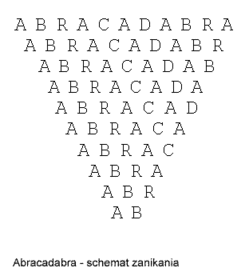 Gestural input, in which players use a variety of input devices to trace symbols or fashion other secret signs with hands and body, is also especially relevant from a technological perspective after the 2010 E3 unveiling of Microsoft's Kinect (formerly project Natal) and the Playstation Move. These devices offer new levels of motion sensing technology, in addition to existing alternative input methods in the Wiimote and Wiimotion Plus, the Playstation Eye, and the force-feedback controls offered by the Novint Falcon. Each technology could be leveraged for new methods of casting spells, provided that designers can break out of the prevailing tray-of-icons approach to magic represented in many popular RPG's.
Gestural input, in which players use a variety of input devices to trace symbols or fashion other secret signs with hands and body, is also especially relevant from a technological perspective after the 2010 E3 unveiling of Microsoft's Kinect (formerly project Natal) and the Playstation Move. These devices offer new levels of motion sensing technology, in addition to existing alternative input methods in the Wiimote and Wiimotion Plus, the Playstation Eye, and the force-feedback controls offered by the Novint Falcon. Each technology could be leveraged for new methods of casting spells, provided that designers can break out of the prevailing tray-of-icons approach to magic represented in many popular RPG's.
Envisioning the most creative use of new gestural and verbal technologies requires, paradoxically, an enterprise of game archeology, looking back into the history of games with magic in a search for hidden gems of unusual interfaces and input methods. Retro gaming and scholarship of retro games can offer a perspective on magic systems before they hardened into a single mold and became homogenized by marketing and ease of use or implementation.
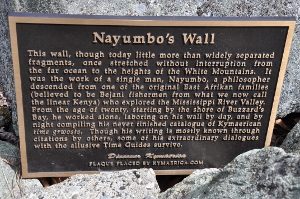 Our current guest blogger here on the Gameshelf came to visit the Boston area several months ago to do some guest lecturing. On his plane ride over, he read in an in-flight magazine about Eames Demetrios and Kcymaerxthaere (or Kymaerica). Kymaerica is “a global work of three dimensional storytelling,” wherein plaques are placed throughout the world and give little bits of story related to a parallel universe.
Our current guest blogger here on the Gameshelf came to visit the Boston area several months ago to do some guest lecturing. On his plane ride over, he read in an in-flight magazine about Eames Demetrios and Kcymaerxthaere (or Kymaerica). Kymaerica is “a global work of three dimensional storytelling,” wherein plaques are placed throughout the world and give little bits of story related to a parallel universe.
It turns out that there is a plaque not far from Boston, and as our visitor also wanted to see some graves nearby, we decided to make a trip of it.
Tags: args, boston, storytelling.
The third annual Boston GameLoop is set to happen on Saturday, August 28 at the Microsoft NERD center in Cambridge. GameLoop is a self-organizing “unconference” based on the BarCamp model, led by local videogame mavens Darius Kazemi and Scott MacMillan.
I’d loosely define the audience as professionals with a vested interest in digital games. Most attendees have been folks directly involved in the videogame industry, but the event has also included journalists, educators, and others interested in (and participating in!) games’ rapidly growing role in modern culture.
No matter their background, all attendees are free to pitch 30-minute session ideas onto a centrally-positioned whiteboard, as well as support others’ pitches by drawing tick-marks beside them. Topics with enough ticks get moved onto the day’s schedule.
Last year, I led a roundtable discussion on the state of game journalism. This year, time permitting, I’d like to arrive prepared with a short presentation or two on wholly different topics, and then find out if anyone actually wants to hear them. Either way, I certainly look forward to seeing both new and familiar faces again, and soaking up an entire day of intelligent game conversation with a lot of really smart people.
Both Zarf and I have ponied up the $40 registration fee for this year. Gameshelf readers who’ll be joining us should feel free to leave a shout-out in comments!
Tags: boston, conferences, gameloop.
I am pleased to introduce Jeff Howard, The Gameshelf’s first guest blogger.
Jeff is Assistant Professor of Game Development and Design at Dakota State University in Madison, South Dakota. He is the author of Quests: Design, Theory, and History in Games and Narratives. He received his B.A. from the University of Tulsa and his M.A. and Ph.D. from the University of Texas at Austin. He is currently working on a game-in-progress, Arcana Manor, and related research about magic systems.
He plans on writing about games and magic over the next couple of months here, starting with this post. Enjoy! —jmac
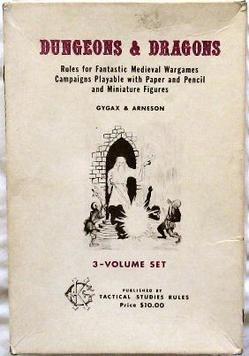
A magic system is any set of symbols and rules designed to rigorously simulate supernatural powers and abilities. Magic is pervasive as a game mechanic and fictional construct within games, spanning across genres (RPG, MMORPG, adventure game, action-adventure, fighter, survival horror) and decades (from the 1974 first edition of Dungeons and Dragons to World of Warcraft and beyond).
Magic is part of the very nature of why people play games: to simulate abilities that they do not possess in real life; to escape from the prison of the mundane to the realm of enchanted; to weave the chaotic forces of life into a rule-bound system that can be understood and, at least partially, controlled.
The problem is that many magic systems aren’t very magical. RPG’s, both multiplayer and single player, have the same shortcoming: players press a button on a tray of icons, then watch an animation fire, followed by a cooldown period, after which players press the same button again. This process of spamming a hotkey button or two, cued to one’s most powerful spells, doesn’t feel like magic.
Magic, as depicted in fantasy literature and occult tradition alike, is a complex and arcane art comprised of gestures and words, as well as ingredients carefully combined with ritualistic artifacts in order to draw away the veil between the natural and supernatural worlds. So, the question emerges: how could designers put the magic back into magic systems?
 As a palate cleanser after the previous eye-rolling meta-post, allow me to offer a link to Lore Sjöberg’s Speak with Monsters, a gameish webcomic I admire for its doing a lot with a narrow subject space. Specifically, Sjölberg wanders up and down the pages of 1977’s original Monster Manual from first edition Advanced Dungeons & Dragons, adapting its uneven but unforgettable artwork and Gary Gygax’s far-out descriptive text and and rules into a series of four-panel comic strips.
As a palate cleanser after the previous eye-rolling meta-post, allow me to offer a link to Lore Sjöberg’s Speak with Monsters, a gameish webcomic I admire for its doing a lot with a narrow subject space. Specifically, Sjölberg wanders up and down the pages of 1977’s original Monster Manual from first edition Advanced Dungeons & Dragons, adapting its uneven but unforgettable artwork and Gary Gygax’s far-out descriptive text and and rules into a series of four-panel comic strips.
It starts out on a high note with a cartoon starring that mustachioed dude from the original book’s “Rot Grubs” illustration (who quickly becomes a recurring character), and continues to explore other oddities of the Gygax era like Shambling Mounds, Bulettes, and, er, Herd Animals. If you’re like me (where “like me” might mean that you burned all the original Monster Manual illustrations to memory as a child), you’ll gulp down the whole mad menagerie in a sitting, and then subscribe for more.
Tags: art, comics, dungeons and dragons, gary gygax, links, role-playing games.
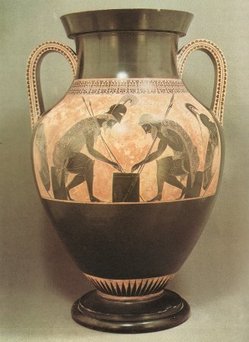 The Gameshelf’s new header graphic represents this website’s first public acknowledgement of the philosophical shift it has undergone since its launch, now over two years ago. As the new subtitle suggests, this blog today tosses aside the notion of supporting a TV show, and instead embraces its identity as a source of independent, original game criticism.
The Gameshelf’s new header graphic represents this website’s first public acknowledgement of the philosophical shift it has undergone since its launch, now over two years ago. As the new subtitle suggests, this blog today tosses aside the notion of supporting a TV show, and instead embraces its identity as a source of independent, original game criticism.
At the start of 2008, I still thought of The Gameshelf as a Siskel-and-Ebert-style television program for reviewing non-mainstream games, with its new blog as simply a place for its cast and crew to note interesting news related to unusual games in between episodes. Two years after that, I had produced only one new episode. While the Diplomacy show stands as one of my proudest creative achievements to date, it’s not something I ever see myself replicating (at least not as a hobby), and my vision of producing new videos at a regular pace began to falter.
Over those same two years, however, the blog grew in its own directions. Zarf posted long essays on topics ranging from the continuing Myst saga to the pixel-art renaissance, and these drew new readers and comments. Kevin started making corkboard-style announcements of interesting events (particularly involving interacive fiction) around Boston, and I personally witnessed people at these events saying they’d heard about it on the blog. Clearly, while the TV show called The Gameshelf grew cold, the blog called “The Gameshelf” didn’t much care, and was finding its own ways to be awesome.
So, at the start of this year, I tried something new. After a rewarding wintertime stint of playing Team Fortress 2 with some new friends, I wrote a longish essay about my experiences, and the aspects that interested me the most from a critical standpoint. I really liked the result, and — crucially, for my needy ego — other folks around the web seemed to like it too. So I wrote some more, a new essay every other week or so. You can currently find the collection-so-far in a new category I humbly call Jmac on Games. (That name is subject to change, along with a hundred other details as I continue dinking around with styles and widgets.)
Writing these critical essays has not only changed how I see The Gameshelf, but how I see my own place in the world of digital games. When people ask me what I do now, instead of shruggingly saying “Well, I make a TV show, sort of, sometimes,” I say “I produce game criticism.” It’s clear to me that this is the broader aspect of what I wanted to do with the TV show all along, and by switching my primary medium from video to text, I’m able to actually ship new stuff with some semblance of regularity. While I’m not abandoning video-based criticism, I find it immensely relieving to let go the fiction, held for years, that I’m somehow a stronger video producer than expository writer.
I feel fortunate that, through the efforts of Andy, Kevin, and the less frequent posters, The Gameshelf proved a ready receptacle for this new effort to actually play to my own creative strengths. My hope is that the mix of all the authors’ posts gives us both the independent game criticism and the “other interesting stuff” promised by the new subtitle in the header.
And while I haven’t written much this month, I have a good excuse, anticipating the rollout a couple of new features (in the periodical sense of the word!) over the next week or two. I appreciate your continued reading the The Gameshelf, and would love to hear what you think, as always. In the meantime, watch this space…
Image: Amphora by Exekias of Ajax and Achilles playing a board game.
Tags: administrivia, meta, the gameshelf.
For the past few years, Mateusz Skutnik has been publishing a series of mini-graphical adventures (in Flash) called "Submachine". (JayIsGames has a good list of links and reviews.)

The games are spare on storyline, but each game has a little bit. Even if the pieces don't fit together tidily... yet. As you might expect, there's been lots of ongoing forum discussion about the series.
Now the author has put up a new Submachine site: Submachine Network Exploration Experience. This is explicitly not a game; it's a set of interlinked mini-worlds, slices of the other games. The only "puzzles" are exploring and discovering new coordinates to explore. (Earlier games introduced a coordinate-based teleporter system.) But -- this is the cool part -- each mini-world contains some printed notes: forum transcripts, giving different people's theories of what's going on and what various parts of the game mean.
This is a lovely way to include the player community in what is, mechanically, a series of solo adventures. It incorporates player contributions; it acknowledges that player response is part of the story, without throwing "canon" (whatever that means) out the window (whatever that means). The Exploration site is clearly expandable -- the creator can add new mini-worlds whenever he wants. Or add new transcript notes. It's not part of the series (there will be more Submachine games) but it's part of the world.
You know my kinks, Watson, so you know this immediately reminded me of Myst Online. Cyan's project was a hugely ambitious MMO, of course, whereas Submachine is one designer's tightly-scoped project. But with SNEE (do I call it "SNEE"?) Mateusz Skutnik is tackling the same issues: ongoing story and the fan community. And, I must admit, he's now a step farther than Cyan ever managed.
(I don't recommend you start with the SNEE site -- it won't mean much if you haven't played the earlier games. Start with Submachine 1: the basement. The whole series is accessible from the Submachine World web site.)
EDIT-ADD: You should immediately read author Sarah Monette's essay on worldbuilding with 10 gnomes, which is about Mateusz Skutnik's hidden-gnome games, their artwork, and how it embraces different facets of the industrial landscape of Elfland. I mean Poland.
EDIT: Spelling the author's name right!
Tags: flash games, mateusz skutnik, myst, pastel, submachine, uru.
 Though I myself have yet to buy into tablet technology, I have had the pleasure playing Days of Wonder’s Small World on Zarf’s iPad a couple of times. I can objectively tell you that I like it a lot, based on the fact that he’s clobbered me at it both times and I still want to play it again. Since then, I’ve watched my Twitter circle get really excited about The Coding Monkeys’ excellent iPhone adaptation of Carcassone — due for an iPad update this summer — and I’ve also been turned onto Luigi Castiglione’s loving iPhone/iPad implementation of the Italian folk game Scopa, worth seeing just for the beautiful Neapolitan card deck it uses. I see more than mere coincidence in my discovering all these at once.
Though I myself have yet to buy into tablet technology, I have had the pleasure playing Days of Wonder’s Small World on Zarf’s iPad a couple of times. I can objectively tell you that I like it a lot, based on the fact that he’s clobbered me at it both times and I still want to play it again. Since then, I’ve watched my Twitter circle get really excited about The Coding Monkeys’ excellent iPhone adaptation of Carcassone — due for an iPad update this summer — and I’ve also been turned onto Luigi Castiglione’s loving iPhone/iPad implementation of the Italian folk game Scopa, worth seeing just for the beautiful Neapolitan card deck it uses. I see more than mere coincidence in my discovering all these at once.
The iPhone is no stranger to board and card game adaptations, but something new seems to be afoot, driven by the little phone’s newer, corpulent cousin. Even with relatively few datapoints, I feel confident that tablet computing (and do note my careful non-namebrand specificity here) is destined to significantly boost public exposure to good, modern board games. Tablet-based games aren’t simply a digital adaptation of tabletop games; they are tabletop games, though of an entirely new sort.
Tags: arcade games, digital games, games, ipad, jmac on games, nostalgia, tabletop games.

